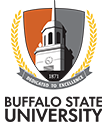
Quantum Information Science (QIS): A broad field of science and engineering
Quantum computers, one of the many promising applications of QIS, are not a replacement for traditional computers. Rather, they are a fundamentally different kind of computer, with the ability to analyze information in ways that traditional computers cannot. While QIS itself is not new, recent breakthroughs in QIS have shown the potential to drive innovations across the American economy, from energy to medicine, through advancements in computation, networking, and sensing. Breakthroughs in QIS are poised to generate entirely new industries, good-paying jobs, and economic opportunities for all Americans (https://www.whitehouse.gov, May 2022).
On May 4, 2022, President Biden released a National Security Memorandum (NSM) on Quantum Computing. The NSM set Presidential policy for promoting and protecting quantum technologies, while mitigating risks future quantum computers could pose to economic and national security. The NSM called out the need for continued engagement among international partners to ensure a vibrant, fair, and competitive market that nurtures scientific and economic opportunities (https://www.whitehouse.gov, May 2022).
The U.S. government’s QIS R&D Budget has increased at a steady rate, from $450 Million in FY 2019, to a projected $850 Million in 2022 (https://www.whitehouse.gov, May 2022).
Among the many exciting research avenues within the world of QIS, it is important to mention the few that faculty in CISNN are involved with:
- Dr. Ahmed, in collaboration with Brookhaven National Laboratory (BNL), is exploring how defect states can be manipulated to enhance coherence lifetimes of phenomena such as single photon emission (SPE) in quantum materials. He is utilizing both his on-campus computational resources and tools (density functional theory) together with experimental setups at BNL. At this time, Dr. Ahmed is tackling an interesting quantum material fabrication problem. He is utilizing various Machine Learning and Deep Learning algorithms to accurately predict the number of layers (within any given flake) of any given 2D quantum material that has been exfoliated onto a substrate.
- Dr. Pathak is working on the synthesis and characterization of various novel materials for quantum phenomena, including topological insulators, Weyl semi-metals, topological superconductors, and magnetism-inspired topological materials. He uses single-crystal materials synthesis techniques and uses magneto-transport and spectroscopy characterization techniques to study the proposed systems.
Collaborative Projects within the Center
The backdrop of understanding the economic feasibility and viability criteria of quantum technologies in conjunction with national security issues, policy, and ethics is absolutely critical. The commercialization of quantum information technologies creates a nexus of many competing interests and concerns: unbridled enthusiasm, great science and engineering, people development and deficiencies, international cooperation and security, and the need and risks of a global supply chain (https://www.quantum.gov/quantum-industry-and-society/, May 2022).
Through CISNN’s collaborative activities, Dr. Ahmed will collaborate with Dr. Qian and Dr. Hunter to explore economic viability models of the quantum technologies and carry out comparisons against the traditional binary bit technology. Lastly, Dr. Ahmed will collaborate with Dr. Shauku to critically understand and delineate the Ethical, Legal, and Social Implications (ELSI) of manifesting the highly complex quantum technology on a national and global scale.

